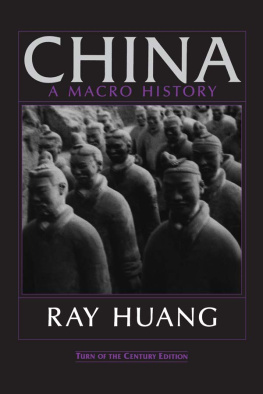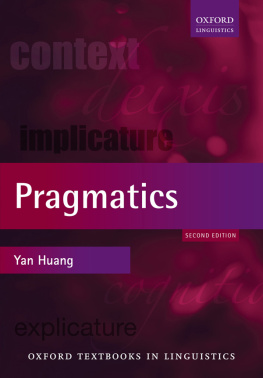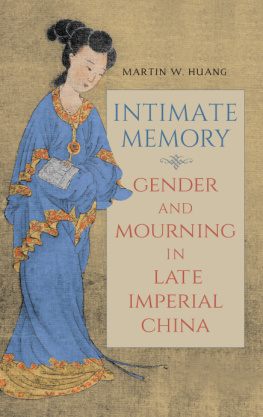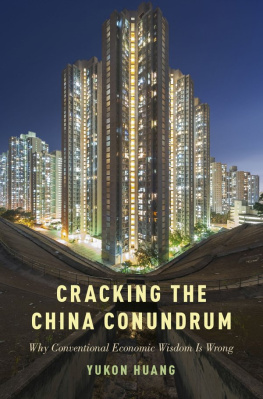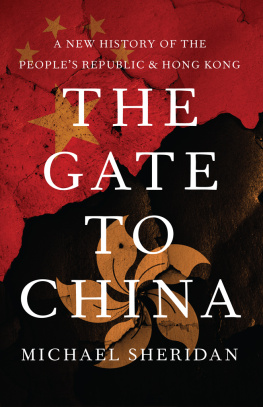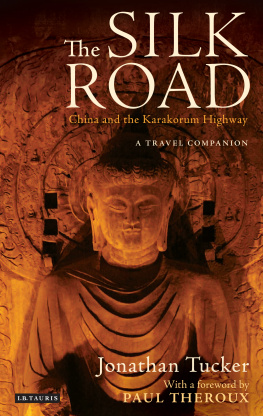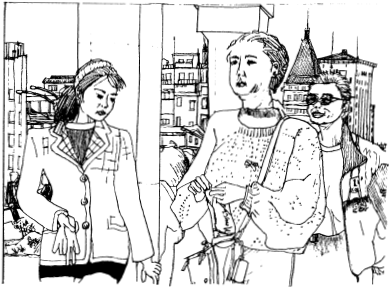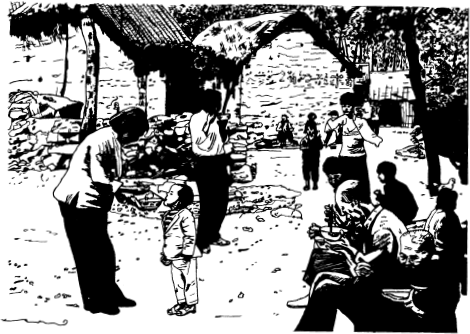COMMENTS ON CHINA: A MACRO HISTORY
On the new edition
Since its first publication in 1988, Ray Huangs China: A Macro History has been widely praised as the best succinct history of China; a new edition of the work, supplemented by a new Preface, Conclusion, and Bibliographic Essay, is therefore most welcome. The strengths of Professor Huangs often contentious, always stimulating history derive from his broad command of the Chinese sources, and his insightful use of historical comparison to illuminate his argument. One may not agree with all of his interpretive views, but one cannot overlook the power of his ideas and the challenge he offers to conventional thinking.
F. W. Mote, professor emeritus,
Princeton University
On the first edition
Only 277 pages for this sparkling survey of Chinese history over the last several thousand years. Huang is the author of the much-admired 1587, A Year of No Significance. In this latest book, he argues that much of what is happening in China today is due to a centuries-old restructuring, a modernization that will bring China further into the mainstream of Western civilization. Impressive anecdotes inform a lively synthesis by a respected scholar. An unusual book that is for both the scholar and the general reader. An undeniable fact about contemporary China is that although until the 1920s the country was mathematically unmanageable, now it is on its way to becoming mathematically manageable. Most convincing, lucid, a brilliant view of Chinese history.
The Book Reader
Huangs macro-history is most welcome. It builds a structure of novel interpretation and vivid anecdote on a solid base of original research and covers the whole sweep of Chinese history, making comparative references to Western history. Huang seeks to explain the present Chinese reforms as the culmination of a commercialization trend that has broken down the old peasant society and brought China into the mainstream of world history. It is debatable whether Imperial China was as stagnant as Huang says, and his theory of the breakup of traditional China bears a resemblance to old-fashioned modernization theory. Still his book is a boldly opinionated, freshly written synthesis that will be read with pleasure and profit by all.
Library Journal
China: A Macro History was published before the student uprising in Beijing, an event in any case too recent to be documented well enough for a seriously useful history. But Huangs book, written with charm and often engaging humor, will quickly place that event into the perspective of history, rendering it understandable to any Sinophile, whether he or she be of video or academic suasion. Its one of the best short histories of any country Ive read.
East West
Turn of the Century Edition
CHINA
A MACRO
HISTORY
RAY HUANG

An East Gate Book

An East Gate Book
First published 1997 by M.E. Sharpe
Published 2015 by Routledge
2 Park Square, Milton Park, Abingdon, Oxon OX14 4RN
711 Third Avenue, New York, NY 10017, USA.
Routledge is an imprint of the Taylor & Francis Group, an informa business
Copyright 1997 Taylor & Francis. All rights reserved.
No part of this book may be reprinted or reproduced or utilised in any form or by any electronic, mechanical, or other means, now known or hereafter invented, including photocopying and recording, or in any information storage or retrieval system, without permission in writing from the publishers.
Notices
No responsibility is assumed by the publisher for any injury and/or damage to persons or property as a matter of products liability, negligence or otherwise, or from any use of operation of any methods, products, instructions or ideas contained in the material herein.
Practitioners and researchers must always rely on their own experience and knowledge in evaluating and using any information, methods, compounds, or experiments described herein. In using such information or methods they should be mindful of their own safety and the safety of others, including parties for whom they have a professional responsibility.
Product or corporate names may be trademarks or registered trademarks, and are used only for identification and explanation without intent to infringe.
Illustration by the author.
Library of Congress Cataloging-in-Publication Data
Huang, Ray.
China: a macrohistory / Ray Huang.Rev. ed.
p. cm.
An East gate book.
Includes index.
ISBN 1-56324-730-5 (cloth: alk. paper).
ISBN 1-56324-731-3 (pbk.: alk. paper)
1. ChinaHistory. I. Title.
DS735.H785 1997
951dc21
96-51941
CIP
ISBN 13: 9781563247316 (pbk)
ISBN 13: 9781563247309 (hbk)
For
Mark and Murray
Bilo and Biyang
Stanley and Steve
Raymond and Jefferson
Contents
Map Sketches
Chronological Charts
China: A Macro History was first published in November 1988. Most of the material was drafted two or three years earlier. My trip to Harbin in 1987 (see below) enabled me to put some finishing touches on it. Suffice it to say that the book is ten years old. Pressure has built up to revise it.
Indeed, a great deal has taken place in the past decade. Only six months after the book came off press, there was the Tiananmen massacre or incident, depending on how you look at it. Since then there has been the annual debate on Chinas trade status in Congress. Issues over human rights have been raised often. Chinas arms sales and copyright infringements caused further disputes. Last year, the presidential election in Taiwan became a point of contention. The firing of missiles into the Formosan strait by the Peoples Liberation Army created momentary international tensions. But the Chinese economy continued to make double-digit advances. All over the country, millions of new personal computers have appeared, many linked to the internet. There is sufficient material for not only revising one book, but also for writing several new ones.
All this creates a serious dilemma for me and for China: A Macro History.
The reader must keep in mind that the concept of a macrohistory is similar to what is called a mega-trend; it deals with the general direction, not all the specific details. If I have mentioned that a medieval town can change its skyline rapidly and dramatically, often in just a few years (p. xxi), but behind the main thoroughfare of the city, the back alleys remain unpaved and contain water puddles even during the dry season (p. xxiii), the description should also apply to speedy construction and growth and the difficulties of coordination in numerous other areas.
Furthermore, the latest policy of the United States toward China is that of engagement. Instead of bombarding Chinese officials with numerous questions to which they cannot find adequate answers, the Clinton administration, apparently with congressional support, wishes to maintain a candid dialogue with the Chinese leadership, asking them to define Chinas nascent power in the forthcoming century. This is to admit that their power is legitimate and inevitable, and we welcome it to steer a clear course in harmony with our own pursuit. If anyone leafs through my original text and pays attention to the sentence for the broadminded reader, the Chinese success is at once an American accomplishment (p. 294), he or she should realize that the author could not have supported this policy with more fervent enthusiasm.

